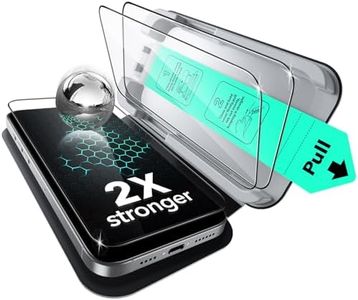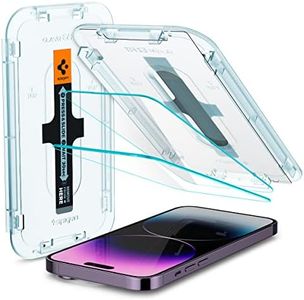We Use CookiesWe use cookies to enhance the security, performance,
functionality and for analytical and promotional activities. By continuing to browse this site you
are agreeing to our privacy policy
10 Best Phone Screen Protectors
From leading brands and best sellers available on the web.Buying Guide for the Best Phone Screen Protectors
Choosing the right phone screen protector is an important step in keeping your device in good condition and extending its lifespan. The main job of a screen protector is to shield your phone's display from scratches, drops, and general wear and tear. With several types and features to consider, it helps to understand what matters most for your needs so you can make an informed decision.Material TypeThe material of a screen protector determines its durability and feel. The two main types are tempered glass and plastic (usually PET or TPU). Tempered glass protectors are thicker, more robust, and feel closer to your phone's actual screen, giving a better, smooth touch experience while offering significant protection from impact and scratches. Plastic film protectors are thinner, lighter, and less noticeable but generally protect only against scratches, not drops. If you want strong protection and a glass-like feel, choose tempered glass; if you prefer something less intrusive for basic scratch protection, opt for plastic.
Hardness RatingHardness rating, often shown as '9H' or similar, indicates how well the protector resists scratches. A higher rating means more resistance to sharp objects like keys or coins. Most tempered glass protectors claim a 9H rating, which is suitable for everyday use. For general users, 9H hardness provides ample peace of mind against daily scrapes; if you're mostly concerned with small marks rather than impacts, even a lower rating on film protectors can suffice.
Clarity and TransparencyClarity refers to how much light passes through the protector and how clear your screen appears. High-transparency protectors allow you to enjoy vibrant colors and sharp details from your display, making them ideal if you watch videos or use your phone for gaming frequently. A protector with lower clarity might look dull or hazy, so if screen quality matters to you, always look for high-clarity or HD transparency versions.
Oleophobic CoatingAn oleophobic coating is a special layer that helps keep fingerprints, smudges, and oils from building up on your screen. This makes your phone easier to clean and keeps it looking clear and fresh. If you dislike cleaning your screen or often use your phone with greasy hands, pick a protector with a good oleophobic coating for less maintenance and better everyday usability.
Edge DesignScreen protectors come in different edge designs, such as 2D, 2.5D, and 3D. Straight or flat edges cover only the flat portion of your phone screen, while 2.5D and 3D designs curve to wrap around the edges, providing more complete coverage. If your phone has a curved edge display or you want maximum protection, a curved-edge protector is the best fit. For flat screens or if you use a tight-fitting case, a standard edge design might be sufficient.
Installation Method and Bubble ResistanceHow easy it is to install a screen protector affects your overall experience. Some protectors come with alignment frames or kits that help you line things up perfectly and minimize bubbles. Bubble-resistant adhesives or easy-apply materials will be easier for beginners to handle. If you want a hassle-free installation, look for these helpful features, especially if it's your first time applying a protector yourself.
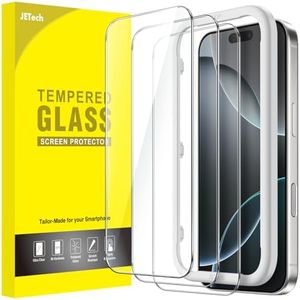
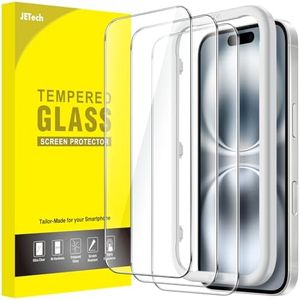

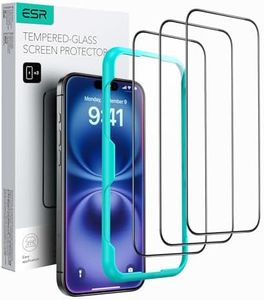
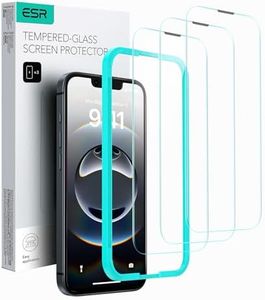
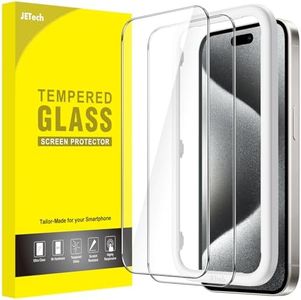
![[2+2 Pack] amFilm OneTouch for iPhone 14 Pro Max 6.7" Glass Screen Protector with Camera Lens Protector. Easiest to Installation, Bubble Free, Full Coverage Case Friendly](https://images-proxy.bestreviews.guide/LDOjcNNSbr2ykSAv_1USpwQ99Ok=/0x300/https://m.media-amazon.com/images/I/41qaAsblxhL._AC_CX679_.jpg)
![[2+2 Pack] amFilm OneTouch for iPhone 15 Pro 6.1 inch Glass Screen Protector Guard with Camera Lens Protector. Easiest to Installation, Bubble Free, Case Friendly](https://images-proxy.bestreviews.guide/4Y0HASBiFY0QIoqcz22EXHiyUrQ=/0x300/https://m.media-amazon.com/images/I/41dzAVHF7oL._AC_CX679_.jpg)
![[2+2 Pack] amFilm OneTouch for iPhone 16 6.1" Screen Protector Guard with Tempered Glass Camera Lens Protector. Easiest to Installation, Bubble Free, Full Coverage Case Friendly](https://images-proxy.bestreviews.guide/V8SPk-OWEGk_VhJ7QoR3hUXj4s8=/0x300/https://m.media-amazon.com/images/I/41yCcvBAOdL._AC_CX679_.jpg)


